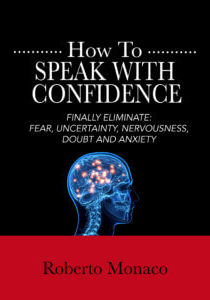The majority of the speaking you will do is to change this…
One of my favorite entrepreneurs, Richard Branson once said:
“The art of storytelling can be used to drive change”.
That is what business and life is about, change:
… change jobs,
… change companies,
… change carriers,
… change supplies,
… change mindsets,
… change behaviors,
… change eating habits,
… change software,
… change how we feel,
… change our facebook profile picture,
… change and more change.
In chiropractic persuasive speaking, the majority of the speaking you will do is to change someone’s behavior:
>>From not getting adjusted to getting adjusted
>>From using chiropractic as a pain management tool to chiropractic preventive wellness care
>>From not referring nobody to referring everybody
>> From not getting their kids checked because they are “healthy” to getting everybody checked in their family
>> From not going to the advanced health classes to attending the classes and bringing their friends
>> From not doing their home-care to doing their home-care
>> From living the “medical model” to living the “chiropractic lifestyle” model
Yes, sometimes you will do some speaking to “reinforce” your current and loyal patient base, but as you can see, most of the speaking you will do is the change someone’s behavior.
There are several great communications tools the can help you increase the odds of changing someone’s behavior, and one of my favorites is storytelling.
Many books have published the scientific evidence of why storytelling works so well and we will refrain from going over all that here, however I want to share with you the biggest reason why you should incorporate patient stories into your talks:
it reduces resistance against your message. When resistance goes down, conversions go up.
First, it is easier for someone in your audience to counter-argue your facts, but it is harder for them to counter-argue your stories, because your stories are your personal experience (less counter-arguing > less resistance > more conversions) .
Second, when you become a great storyteller, you will induce a process called identification (term coined by rhetorician Kenneth Burke), which is the process where the audience identifies himself or herself with the character of the story (more identification less resistance > more conversion).
Identification creates that voice in your audience’s mind “man, this person it is just like me. This story is my story. I felt like you (the speaker) was talking to me”
You MUST incorporate patient stories in the presentations you do (corporate talks, stress talks, dinner with the doctor, patient orientation classes, wellness talks, etc) so your audience identifies himself or herself with characters of your stories (your patients) and you maximize conversations.
If wanna know how to find, create and tell stories, you have to join us at our IFF for chiros event. It’s a 3-Day intensive where we teach you what stories do you need to be telling, how-to create them, and where to tell them.
Sign up here:
www.chirospeaking.com/iff
Til tomorrow,
Roberto Monaco,
The Chiro Speaking Company

Free ebook shows you how to speak with confidence. Get rid of completely or reduce SIGNIFICANTLY your fear of speaking in front of people.

How do you prefer to learn?
We have an option that's just right for you
1 on 1
Private coaching for those who prefer to have personalized attention.
Discover More
Seminar
Group seminars for those who prefer an immersion experience...
More Info
Online
Online training for those who prefer to work at their own pace.
Access site